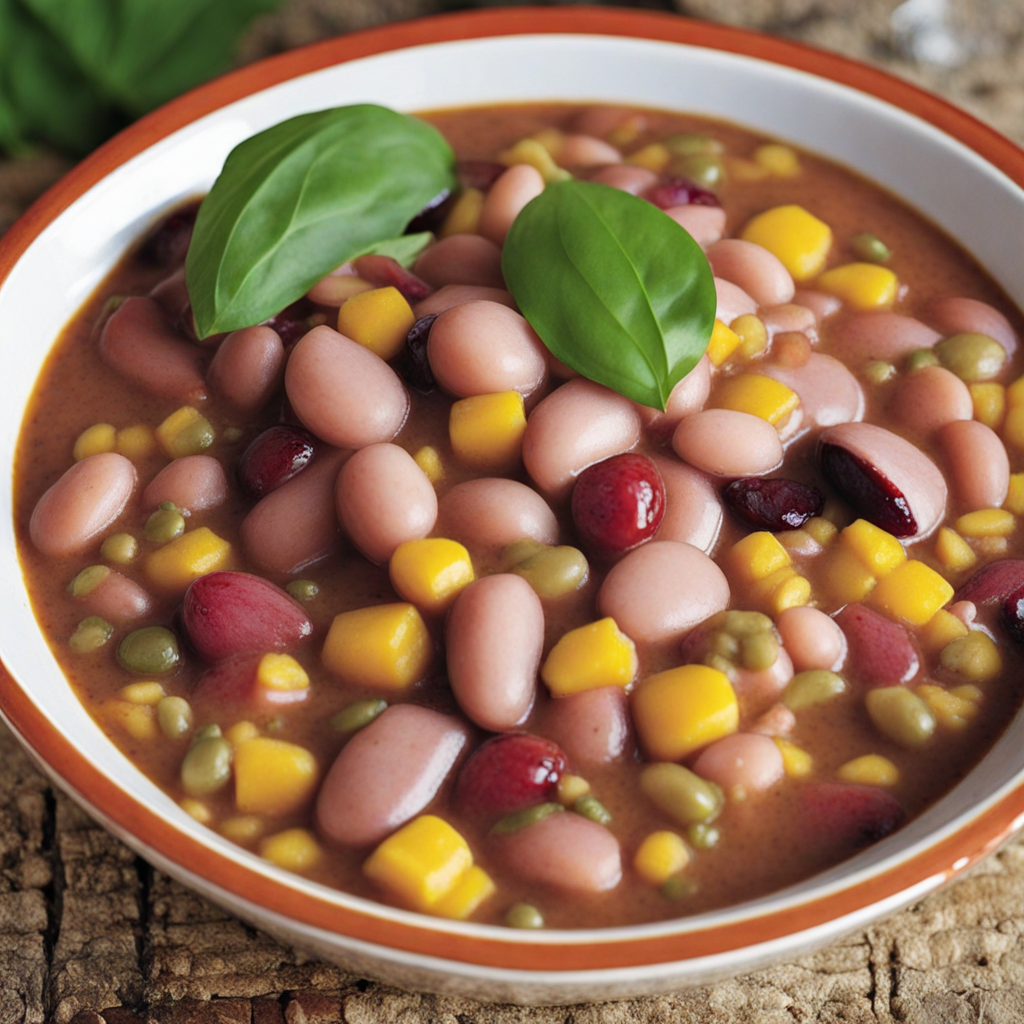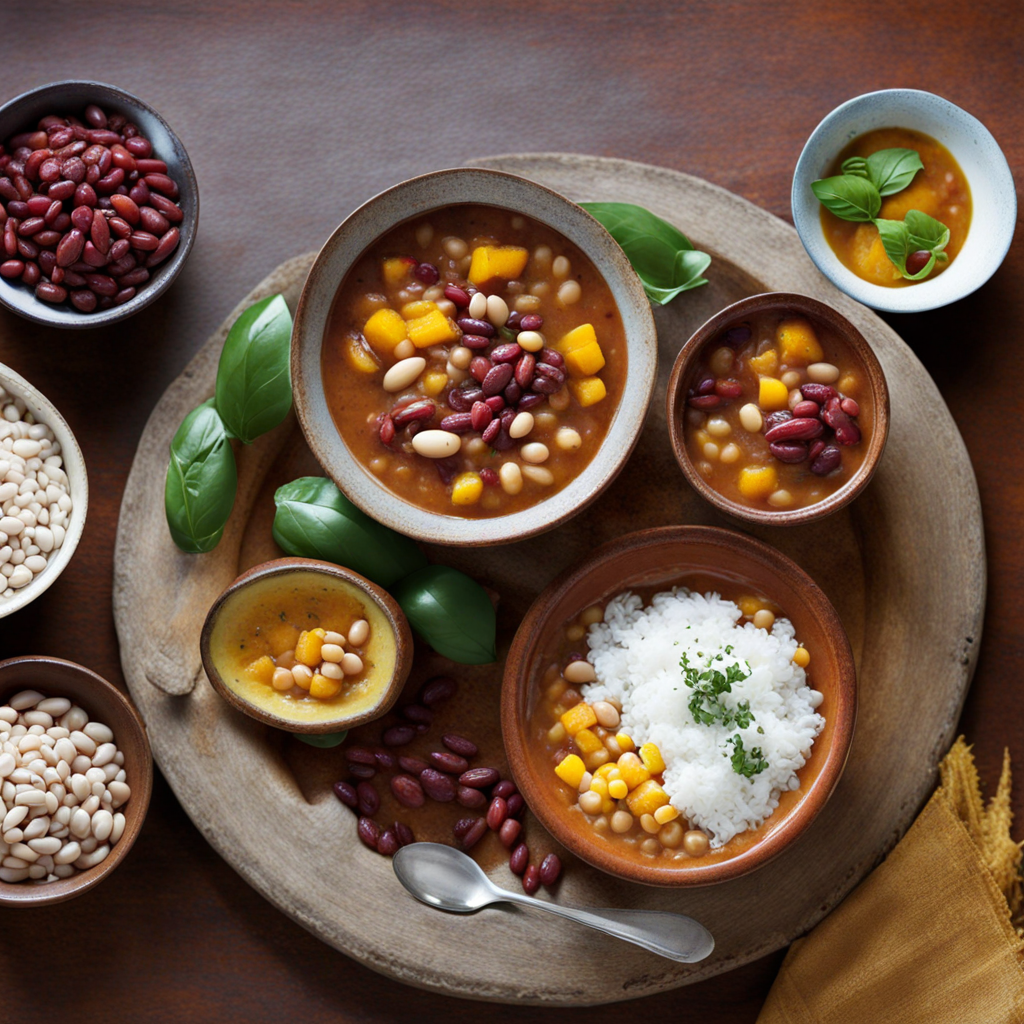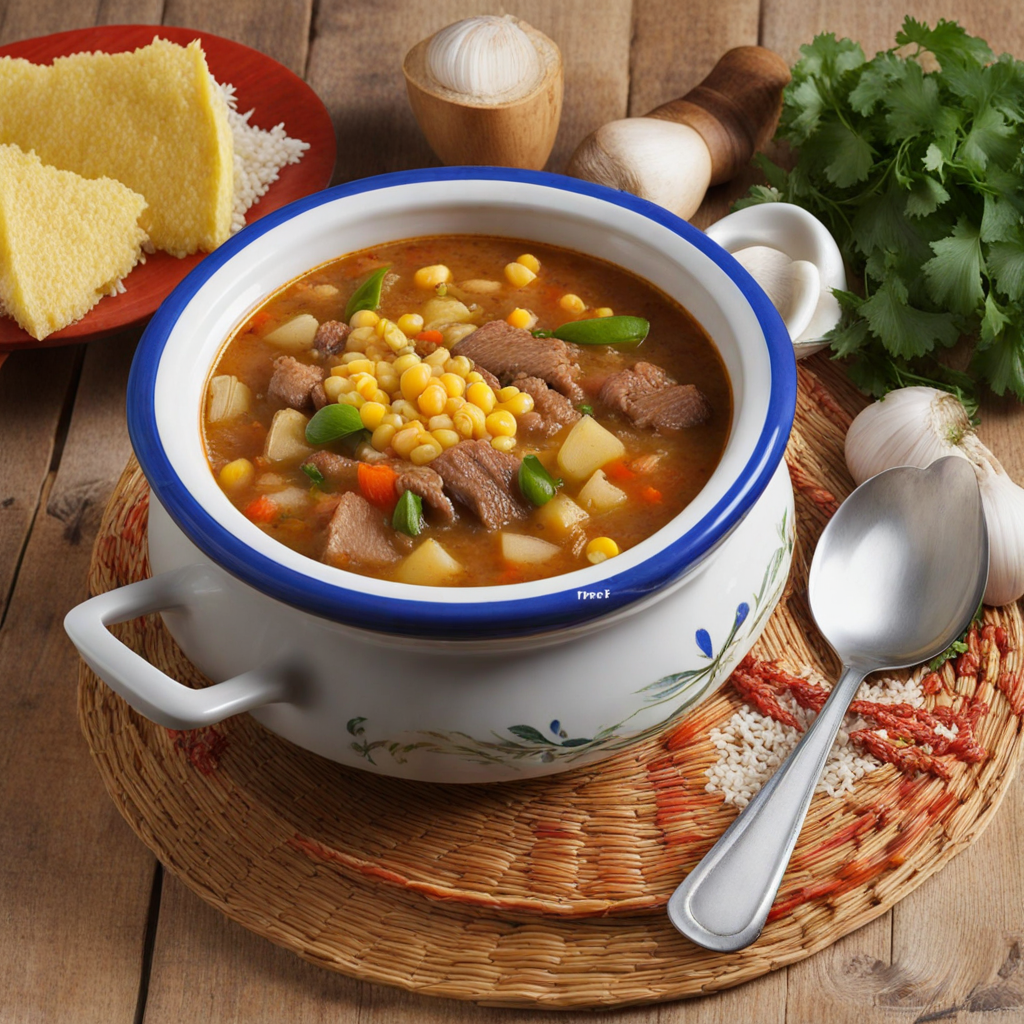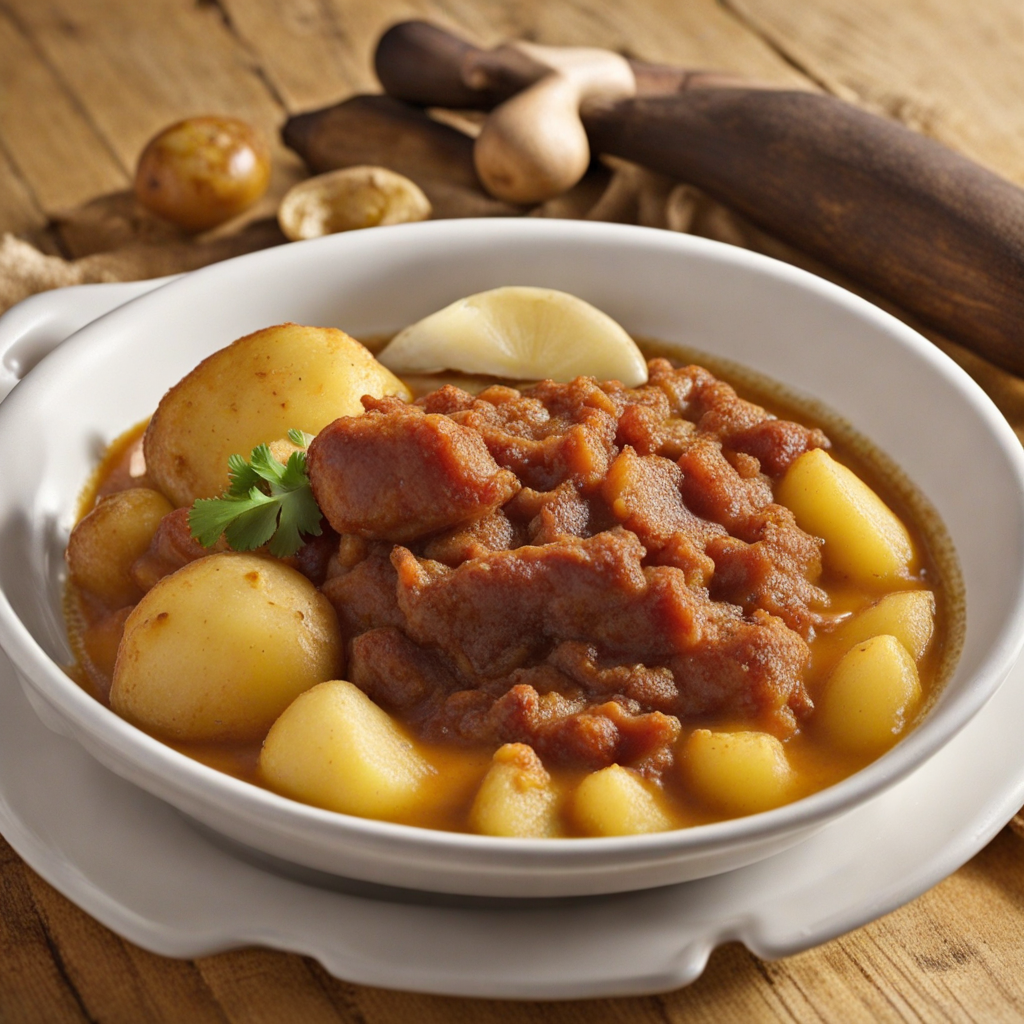Porotos Granados
Porotos Granados is a traditional Chilean dish that beautifully showcases the country's rich agricultural heritage. At its core, this dish features a medley of fresh ingredients, primarily white beans, known as "porotos," which are simmered to creamy perfection. The beans are often complemented by a variety of seasonal vegetables, such as corn, squash, and tomatoes, which add vibrant colors and textures, making each bite a delightful experience. The combination of these ingredients creates a hearty and satisfying meal that reflects the essence of Chilean home cooking. What sets Porotos Granados apart is its unique seasoning blend, typically including fresh herbs like cilantro and basil, along with a touch of paprika or chili for warmth. This harmonious blend enhances the natural flavors of the beans and vegetables, allowing them to shine while creating a comforting aroma that fills the kitchen. Often served with a drizzle of olive oil or a dollop of sour cream, the dish provides a rich and creamy mouthfeel that balances the freshness of the ingredients. Traditionally enjoyed during the summer months when the produce is at its peak, Porotos Granados is more than just a meal; it's a celebration of Chile's culinary landscape. The dish is not only nutritious but also a representation of communal dining, often shared among family and friends. As you savor each spoonful, you'll experience the warmth and hospitality of Chilean culture, making it a must-try for anyone looking to expand their culinary horizons.
How It Became This Dish
The History of Porotos Granados: A Culinary Gem of Chile Porotos Granados is a traditional Chilean dish that encapsulates the country's agricultural bounty, cultural heritage, and social traditions. This hearty bean stew, featuring fresh ingredients, has become a staple in Chilean cuisine, offering a glimpse into the history and evolution of the nation’s food practices. #### Origins: A Blend of Indigenous and Colonial Influences To understand the origins of Porotos Granados, we must first recognize the role of beans in the diet of pre-Columbian civilizations. The indigenous Mapuche people, among others, cultivated various legumes, including different types of beans (porotos). These legumes were a central component of their diet, providing essential protein and nutrients. The use of beans can be traced back thousands of years, long before the arrival of Spanish colonizers in the 16th century. When the Spanish arrived in Chile, they brought with them new agricultural practices and crops, including European beans, which were integrated into the local farming systems. The fusion of indigenous ingredients and European culinary techniques laid the groundwork for what would become Porotos Granados. The dish itself is thought to have emerged in the central valleys of Chile, where the climate and soil conditions are particularly favorable for agriculture. #### Ingredients: A Celebration of Seasonal Produce The traditional recipe for Porotos Granados is simple yet rich in flavor and nutrition. At its core, the dish features fresh "porotos" (beans), typically the large, creamy white "poroto granado" variety, which is harvested in the summer months. The beans are often cooked with a medley of vegetables, including corn, squash, and tomatoes, which reflect the seasonal bounty of Chile's central region. The addition of spices and herbs, such as cumin and cilantro, enhances the dish's flavor profile. While the basic recipe remains consistent, regional variations exist, allowing for personal touches and adaptations based on local produce and family traditions. The use of fresh ingredients not only emphasizes the importance of seasonality in Chilean cooking but also showcases the agricultural richness of the region. #### Cultural Significance: A Dish of Community and Tradition Porotos Granados is more than just a meal; it is a dish steeped in cultural significance and communal values. Traditionally served during the summer harvest season, it symbolizes abundance and celebration. Family gatherings, festivals, and community events often feature this dish, fostering a sense of connection among those who share it. In Chile, beans have long been regarded as a source of sustenance for the working class. They are affordable, nutritious, and filling, making them a staple in many households. Porotos Granados, in particular, reflects the resilience of Chilean society, as it has been a comfort food during times of hardship. Its preparation often involves the participation of family members, allowing for the transmission of culinary knowledge and traditions across generations. Moreover, the dish embodies the spirit of "sabor a hogar" (taste of home), representing the warmth and comfort of family meals. During winter months, when fresh produce is less abundant, the dish can be adapted to include preserved ingredients, ensuring that its legacy continues throughout the year. #### Development Over Time: From Rural Tradition to Urban Delight As Chilean society evolved, so too did Porotos Granados. Initially a dish rooted in rural cooking, it gradually made its way into urban centers, where it became popular in homes and restaurants alike. In the mid-20th century, with the rise of urbanization and migration to cities, traditional dishes began to be reinterpreted, leading to a fusion of old and new culinary practices. Today, Porotos Granados is celebrated not just as a local dish but as a symbol of Chilean identity. It is featured in restaurants that serve traditional Chilean cuisine, often alongside other staple dishes like empanadas and pastel de choclo. Chefs have embraced the dish and are experimenting with modern twists, incorporating gourmet elements while maintaining the essence of the original recipe. The growth of gastronomy tourism in Chile has also contributed to the dish's popularity. Visitors to the country are eager to experience authentic Chilean flavors, and Porotos Granados serves as an excellent introduction to the rich culinary heritage of the nation. Food festivals and events increasingly showcase regional specialties, allowing local chefs and home cooks to share their interpretations of this beloved dish. #### Contemporary Relevance: Sustainability and the Future In recent years, the conversation around food sustainability has gained momentum worldwide, and Porotos Granados has found its place in this discourse. The emphasis on using local, seasonal ingredients aligns with modern sustainability practices, encouraging a return to traditional farming methods that support local economies and reduce environmental impacts. Cooks are now more conscious of the origins of their ingredients, often sourcing beans and vegetables from local farms. This not only preserves the flavor and quality of the dish but also enhances its cultural significance as a representation of Chile's agricultural heritage. The movement toward sustainable eating and farm-to-table practices has revived interest in traditional recipes like Porotos Granados, ensuring that they remain relevant in the contemporary culinary landscape. #### Conclusion: A Dish with Roots and Wings Porotos Granados is a testament to the rich tapestry of Chilean food history, reflecting the country's indigenous roots, colonial influences, and evolving culinary practices. From its humble beginnings as a rural dish to its place in modern gastronomy, it embodies the essence of Chilean culture and community. As the world continues to embrace the values of sustainability and local food systems, Porotos Granados stands poised to inspire future generations. This beloved dish not only nourishes the body but also feeds the soul, reminding us of the importance of tradition, family, and the simple joy of sharing a meal. Whether enjoyed in a bustling city restaurant or a quiet family kitchen, Porotos Granados remains a cherished symbol of Chilean identity and a celebration of seasonal abundance.
You may like
Discover local flavors from Chile







